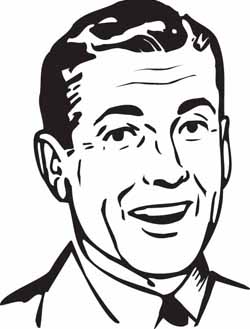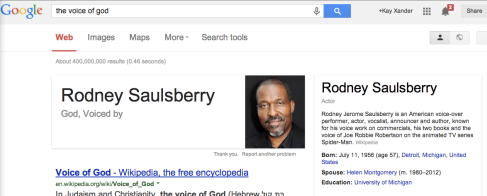Listen to vintage voiceovers – radio commercials from the 1930s, film trailers from the 1940s, those Driver’s Ed flicks they used to play at schools in the 1970s and 1980s – and you’ll hear a pretty standard approach.
It’s called the Voice of God, and it’s always a male voice. Usually a baritone. Powerful, authoritative. Fearless and strong. Commands attention.
Before 1975 or so, the Voice of God – often shortened to ‘VOG’ – was generally identifiable as a Caucasian man. These days, in English-speaking markets, African-Americans like Morgan Freeman seem to be favoured for the role.
(As a matter of fact, when I Googled ‘Voice of God’, I got this guy –
– whom I’ve never heard of before. Fantastic SEO, there, buddy.)
At any rate, VOG is serious and trustworthy. It’s comforting. It’s the easy, default voiceover.
And even in 2014, it’s still done by a man.
A female VOG?
There is no female equivalent to a VOG. Occasionally you get the kindly Mother-Nature type, but in the advertising world, she only sells menstrual remedies and spaghetti sauce.
The default for voiceovers – corporate as well as advertising – is still a male voiceover. I can’t tell you how many times I’ve bid on a job, done an audition, and gotten the sad news back…‘Sorry, but we’re going to go with a man’.
Too bad, because an unexpected voiceover is a good way to freshen up a production, make it sound fresh and new.
Celebrity female voiceovers
A few companies have figured that out – and they’re often companies that sell traditionally ‘masculine’ products like cars, insurance and airline flights.
The voices of celebrated actresses like the Oscar winner Helen Hunt, West Wing’s Allison Janney, and Glenn Close are being used to sell these big-ticket products.
That makes sense: women are increasingly the ones buying them. And if your customer is a woman, shouldn’t your voiceover be too?


